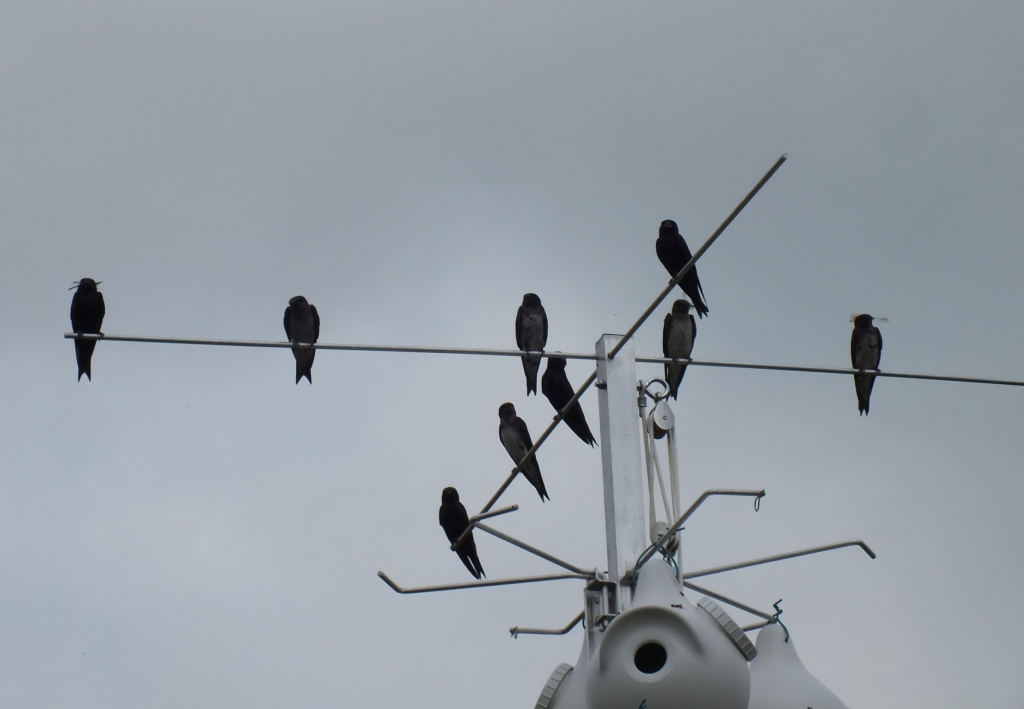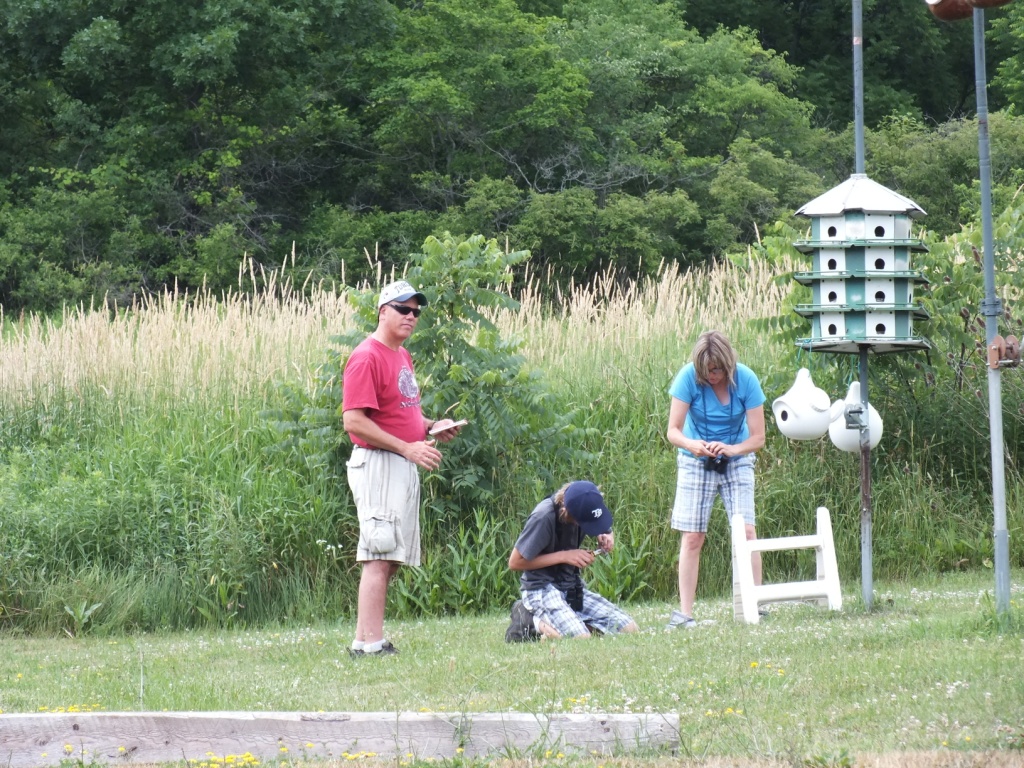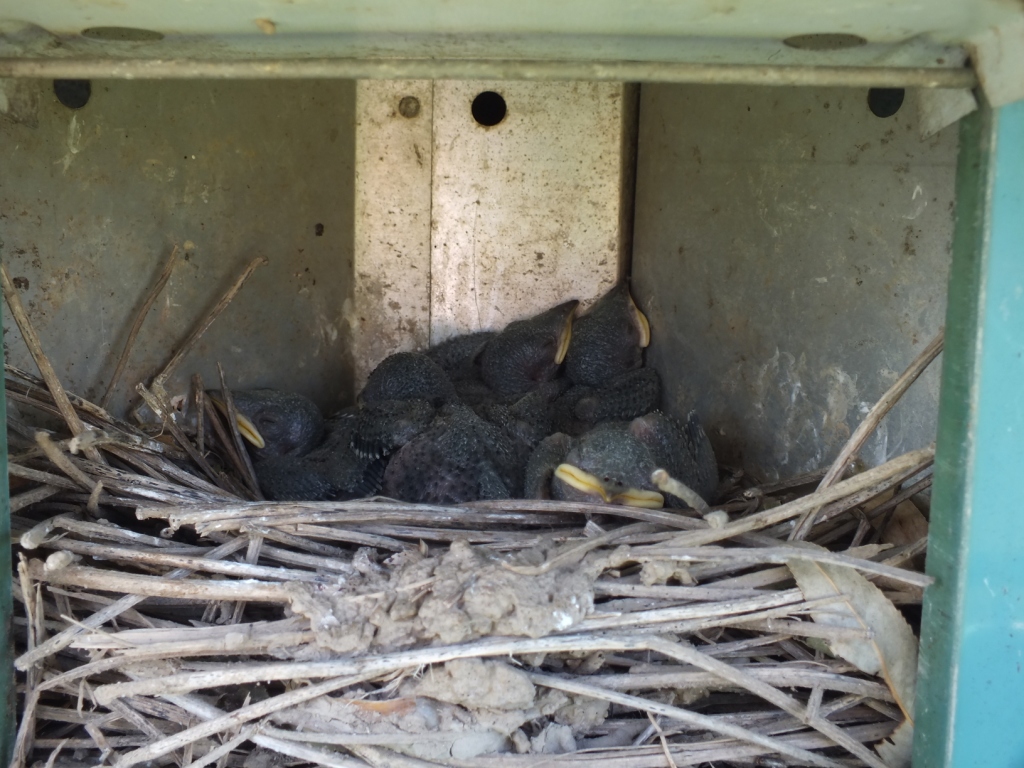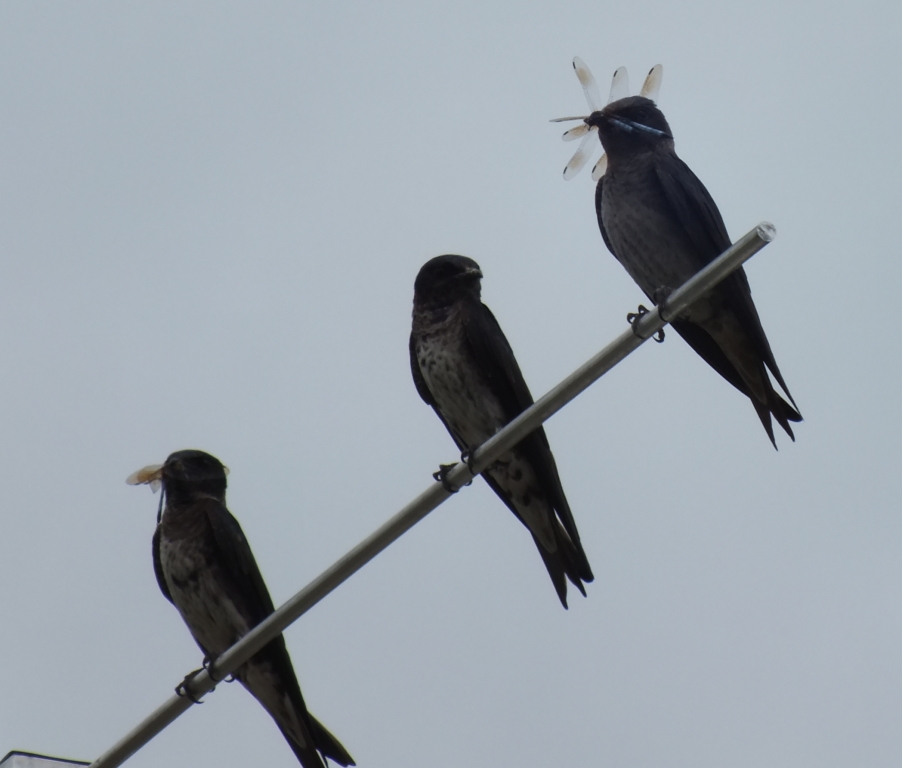
While we were banding some of the chicks, these adult martins sat patiently just above our heads waiting to get back to feeding their young. Note that a couple of them are carrying dragon flies.
If you look at the distribution map for the Purple Martin in the 2nd Atlas of the Breeding Birds of Ontario: 2001-2005, you will see a bunch of little boxes, many of them with little black dots in the centre of them (see the picture below). The boxes represent 10-km squares which are the units within which observers try to determine whether a bird is breeding or not. The dots are the concerning feature. The first Atlas was conducted between 1980 – 1985. If a bird species was present in a 10-km square during the first Atlas but not in the second, there is a dot. And there are a LOT of dots. The main decrease indicated by these dots is in the north and inland areas of Ontario. In fact, it was calculated that there was a 46% decline in the probability of seeing a Purple Martin between the two Atlases. It would appear that this is another “aerial insectivore” that is being hard hit.

Ben Oldfield and his Dad helping Nancy monitor the martin nest boxes…..and band some of the juveniles.

A typical Purple Martin nest. The door is open exposing the wall of mud and sticks which reduces the size of the entry hole (when the door is shut).
Our martin colony at Ruthven continues to do fairly well. We were out today banding those nestlings that were big enough. The adult birds were not particularly put off by our being there. They waited patiently on the cross trees of the new gourd housing unit 5 meters away for us to finish and then went back to busily feeding their young. This gave us a good chance to see what they were feeding – one had a butterfly (the consensus opinion was that it was a Comma) but most who had food were carrying dragon flies and one even had two!

Dragon flies are a common food taken by Purple Martins to give to their young. Note that the bird on the right is carrying 2.
We had the nets open for about 5 hours this morning to try to band the young birds that are beginning to fledge now in increasing numbers. Tufted Titmice seem to have had a good breeding season as we banded another 5 young ones this morning. We also got a young Carolina Wren. On the whole we banded 51 birds (including 25 Purple Martins). Soon the young will disperse, the adults will hunker down and go through a complete moult, and then the big trek south will begin in earnest.
Rick



